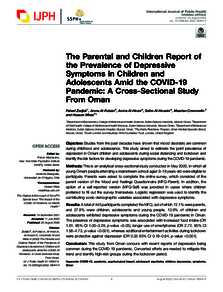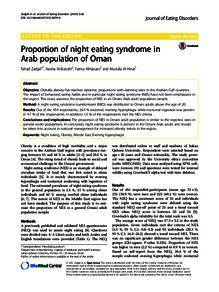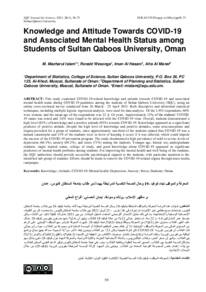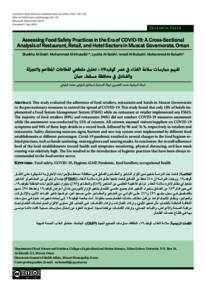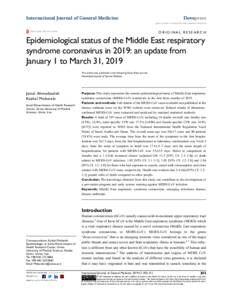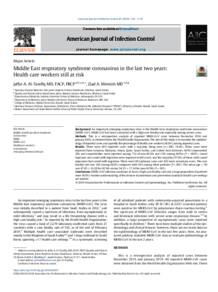Document
The parental and children report of the prevalence of depressive symptoms in children and adolescents amid the COVID-19 pandemic : a cross-sectional study from Oman.
Identifier
DOI: 10.3389/ijph.2022.1604474
Source
International Journal of Public Health. v. 67, 1604474
Contributors
Al-Futaisiyah, Amna., Author
Al-Hosniyah, Amira., Author
Al-Huseini, Salim., Author
Crommelin, Maarten., Author
Mirza, Hassan., Author
Country
Switzerland
Publisher
Frontiers Media S.A.
Gregorian
2022-08-25
Language
English
Subject
English abstract
Objective: Studies from the past decades have shown that mood disorders are common during childhood and adolescence. This study aimed to estimate the point prevalence of depression in Omani children and adolescents during social distancing and lockdown and identify the risk factors for developing depressive symptoms during the COVID-19 pandemic. Methods: This is an analytical cross-sectional study conducted in May 2020, in which all young Omani people attending a mainstream school aged 8–18 years old were eligible to participate. Parents were asked to complete the online survey, which consisted of the parent version of the Mood and Feelings Questionnaire (MFQ-Parent). In addition, the option of a self-reported version (MFQ-Self) was provided in cases where children preferred to fill out the survey themselves. Logistic regression was used to identify the contributing socio-demographic variables associated with depressive symptoms. Results: A total of 445 participants completed the MFQ, out of which 72.1% were parents, and 27.9% were children, adolescents and young people. 13.9% of children and adolescents exhibited depressive symptoms during the COVID-19 pandemic in Oman. The presence of depressive symptoms was associated with increased food intake (OR 1.81, 95% CI 1.00–3.29, p-value 0.05), longer use of smartphones (OR 2.72, 95% CI 1.56–4.73, p-value 0.001), whereas additional entertainment activities during lockdown were protective against depression (OR 0.35 95% CI 0.19–0.64, p-value 0.001). Conclusion: This study from Oman concurs with recent reports of depression being common during the COVID-19 pandemic. Concerted efforts are needed to mitigate this trend and identify high-risk groups during the lockdown period.
ISSN
1661-8564
Resource URL
Category
Journal articles

